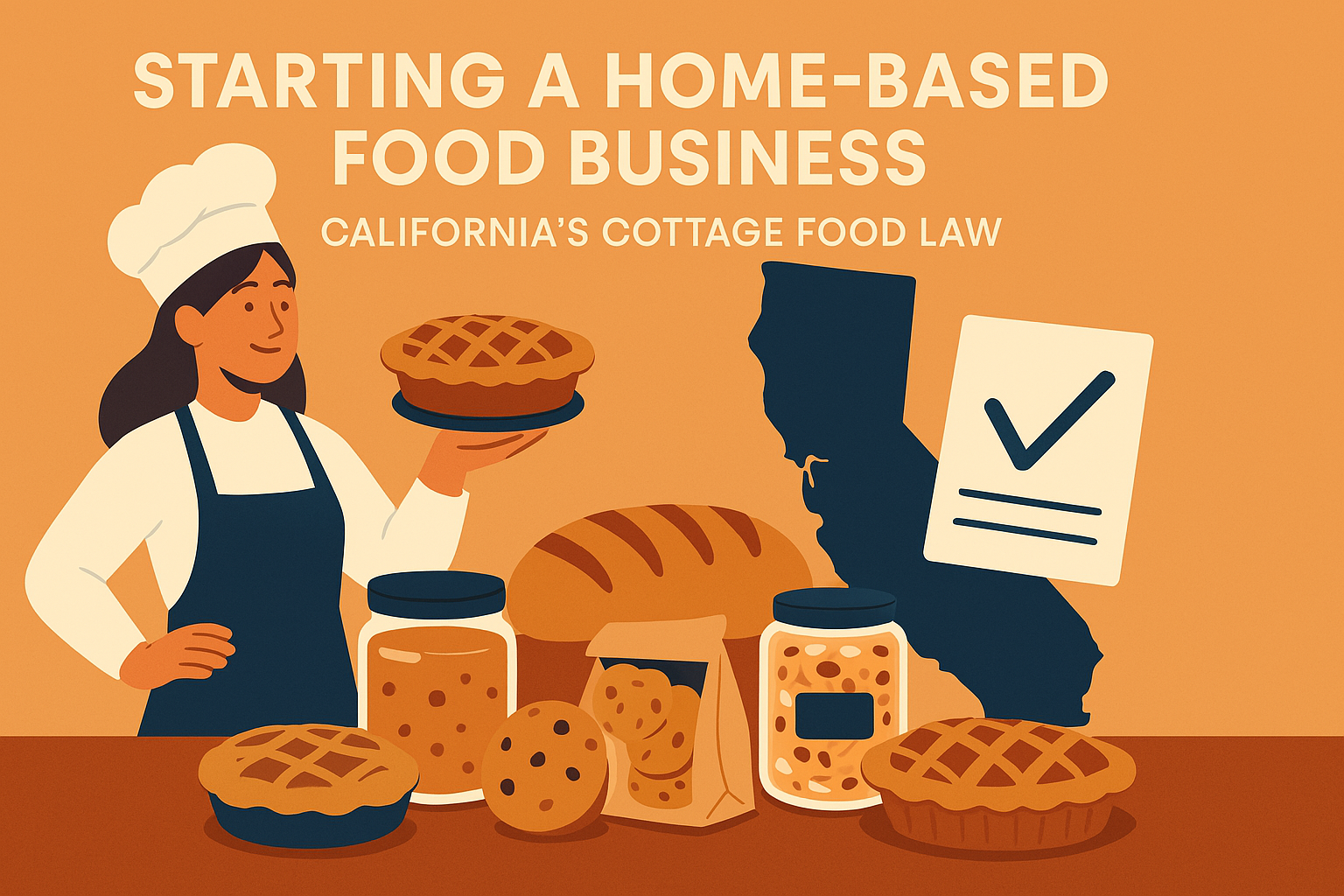Starting a home-based food business in California involves navigating specific regulations and requirements established under the state’s Cottage Food Law. This law permits individuals to prepare and sell certain non-potentially hazardous foods from their home kitchens, offering an accessible pathway for aspiring food entrepreneurs.
Understanding California’s Cottage Food Law
Enacted in 2013, the California Homemade Food Act allows individuals to operate a Cottage Food Operation (CFO) from their private residence. CFOs are authorized to produce and sell specific non-potentially hazardous foods that do not require refrigeration, such as baked goods, jams, and granola. The California Department of Public Health (CDPH) maintains an Approved Cottage Foods List, detailing the products permissible under this law.
Permit Classifications
There are two classes of permits for CFOs, depending on how you plan to sell your products. Details can be found at the California Department of Public Health.
- Class A Permit: Allows for direct sales to consumers, such as at farmers’ markets or from home. Operators must register with their local environmental health agency and complete a self-certification process. No initial kitchen inspection is required. The gross annual sales limit for Class A operations is $75,000.
- Class B Permit: Permits both direct sales to consumers and indirect sales through third-party retailers like restaurants and shops. This permit requires an annual kitchen inspection by the local health department. The gross annual sales cap for Class B operations is $150,000.
Steps to Establish a Cottage Food Operation
- Identify Approved Products: Ensure the foods you intend to prepare are on the Approved Cottage Foods List.
- Complete Food Safety Training: Within three months of obtaining your permit, complete a food processor training course approved by CDPH. Training must be renewed every three years. For more info, check this resource by CalOSBA.
- Obtain Necessary Permits: Apply through your county’s environmental health department. Requirements may vary, so review your local process carefully.
- Comply with Labeling Requirements: Product labels must include the phrase “Made in a Home Kitchen” and list ingredients in descending order by weight.
- Adhere to Sales Limits: Track your gross revenue to stay within the limits based on your permit class.
Additional Considerations
- Zoning and Business Licenses: Contact your local planning department to confirm home businesses are allowed in your area and whether a business license is needed.
- Insurance: Consider general liability insurance to protect against potential claims related to your food products.
- Employee Restrictions: Cottage food operations are limited to one full-time equivalent employee, not including household or family members.
For personalized guidance and support in starting your own cottage food business, consider reaching out to ZestyBakers.com. They offer helpful resources, templates, and advice tailored for home bakers in California.
Embarking on a cottage food operation can be a fulfilling endeavor — one that lets you share your culinary creations with your community, all while staying compliant with California’s supportive regulations.
